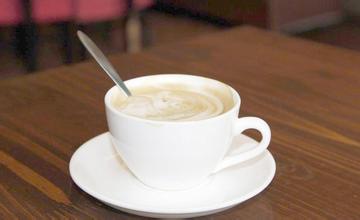Boutique coffee rose summer coffee flavor taste estate production characteristics introduction rose summer coffee
Not many people paid attention to Rose Summer until one day. Esmeralda Manor in Panama separated it from other varieties and won the national coffee competition. She is so extraordinary that the fruity and floral elements are like Yega Xuefei from Africa and Ethiopia on the other side of the world. Of course, these are all old news now. Some small farms also get summer roses and are eager to grow their own roses. However, the results are different: depending on the weather, soil and altitude, this "star" variety seems to have different tastes in different geographical locations. However, in the Aktenango region, we see typical rosy summer features: the slender shape of beans, the changes during baking, and the elegant and uncooked flavor in the cup. The dry aroma of Rosa is very bright, with aromas of rose and jasmine, with aromas of pomelo and citrus, light baked with nutty aromas, and wet aromas with hazelnut and more floral characters. In terms of taste and flavor, the early aroma may be slightly mild and subtle compared with the previous rising aroma.
With a little cooling, the flower and fruit flavor gradually increases as the temperature drops, and the cold aroma is excellent (sweet preserved fruit, rose fruit, orange glaze jam, strawberry jam, pine wood, cherry, vanilla, rose flavor fades away. Lemon aromas can be derived). This is a coffee that can be praised by a large number of adjectives, the sweetness of Ganse, which is testing the brightness of this coffee, especially in the case of light roasting. In 1996, there was a visit to a farm on sale in the Haramijun area of the Bocatie Valley, which was attracted by this beautiful farm and bought it immediately. This is Esmeralda. Daniel Lou, the third son of Haramiqiong Farm. It is in this farm that Mr. Bidasson has grown Geisha coffee that attracts the attention of the coffee world.
The pronunciation of Geisha is the same as Japanese geisha, so it is also called geisha coffee. Because the tree species are taller than ordinary coffee trees, they are originally planted in a small area of the manor and are used as windbreaks. In order to take part in the annual competition for the best coffee in Panama, the son of the manor owner searched all the coffee trees in the manor for testing, so that Geisha had a chance to appear on the stage. Later, he also participated in various world coffee competitions. The species that won a total of 11 championships, Geisha, was discovered in the Rose Summer Forest of Ethiopia in 1931 and then sent to the Coffee Research Institute of Kenya. It was introduced to Uganda and Tanzania in 1936, to Costa Rica in 1953, and to Panama in the 1970s by Mr. Francis Coselazin of Dongba Seven Farm Garden, who received seeds from CATIE in Costa Rica and began to grow Rose Summer Coffee.
Geisha, sweeping the coffee world with the power of a hurricane, the coffee revolution is so fierce that the blue mountains of Jamaica and Kona of Hawaii, which have long occupied the throne of the coffee kingdom, have to stay away. This wild species, which originated in Ethiopia, is now widely used in major coffee producing areas after numerous battles, and its best spokesman is the "LaEsmeralda" estate from Panama.
History of Esmeralda Farm: founded by Hans Elliot, a Swede, in 1924, Esmeralda Farm was not a coffee grower but a ranch. Forty years later, in 1964, Mr. Danielupidason's grandfather, Ruth Lover. Mr. Bidasson bought Esmeralda Farm in order to have an old home after retirement. His grandfather, Mr. Ruth Lover Bidasson, was born in Sweden and was president of the Bank of America and director of United Nations development. His son, Mr. Brais Bidarsson, moved to Panama from California in 1973 and inherited to run his father's farm. In 1987, most of the farms were changed to grow coffee. In 1994, he invested in the machinery and equipment of refined coffee in order to create a brand. Mr. Brais Bidarson and his wife Susan also raised three children, Elligu (born in Philadelphia in 1966). Rachel Lou (born in Sweden in 1967) and Danielu (born in Panama in 1974).

Important Notice :
前街咖啡 FrontStreet Coffee has moved to new addredd:
FrontStreet Coffee Address: 315,Donghua East Road,GuangZhou
Tel:020 38364473
- Prev

Introduction to the characteristics of Ethiopian Coffee Flavor Manor with acidity and texture
5% of the coffee belongs to plantation coffee. This is a modern way of growing. Coffee is also grown in a forest, but new varieties are used and planted in rows with other shade trees. Due to different processing methods, coffee can be divided into washed coffee (Washed coffee) and sun-cured coffee (Sun-dried coffee). Washed coffee accounts for 35% of exports. Of good quality
- Next

Introduction to the characteristics of Bolivian Coffee
Takesi Manor, drinking water and coffee after harvest treatment, using alpine melting cold snow landscape, so we give her a nickname: Takesi Snow vein Manor; in addition to low temperature, pollution-free environment, fertile and well-drained volcanic soil, is also an element of coffee flavor, although the owner of Agrotakesi SA is rich, but deep respect for nature and the way to get along, but
Related
- Detailed explanation of Jadeite planting Land in Panamanian Jadeite Manor introduction to the grading system of Jadeite competitive bidding, Red bid, Green bid and Rose Summer
- Story of Coffee planting in Brenka region of Costa Rica Stonehenge Manor anaerobic heavy honey treatment of flavor mouth
- What's on the barrel of Blue Mountain Coffee beans?
- Can American coffee also pull flowers? How to use hot American style to pull out a good-looking pattern?
- Can you make a cold extract with coffee beans? What is the right proportion for cold-extracted coffee formula?
- Indonesian PWN Gold Mandrine Coffee Origin Features Flavor How to Chong? Mandolin coffee is American.
- A brief introduction to the flavor characteristics of Brazilian yellow bourbon coffee beans
- What is the effect of different water quality on the flavor of cold-extracted coffee? What kind of water is best for brewing coffee?
- Why do you think of Rose Summer whenever you mention Panamanian coffee?
- Introduction to the characteristics of authentic blue mountain coffee bean producing areas? What is the CIB Coffee Authority in Jamaica?

